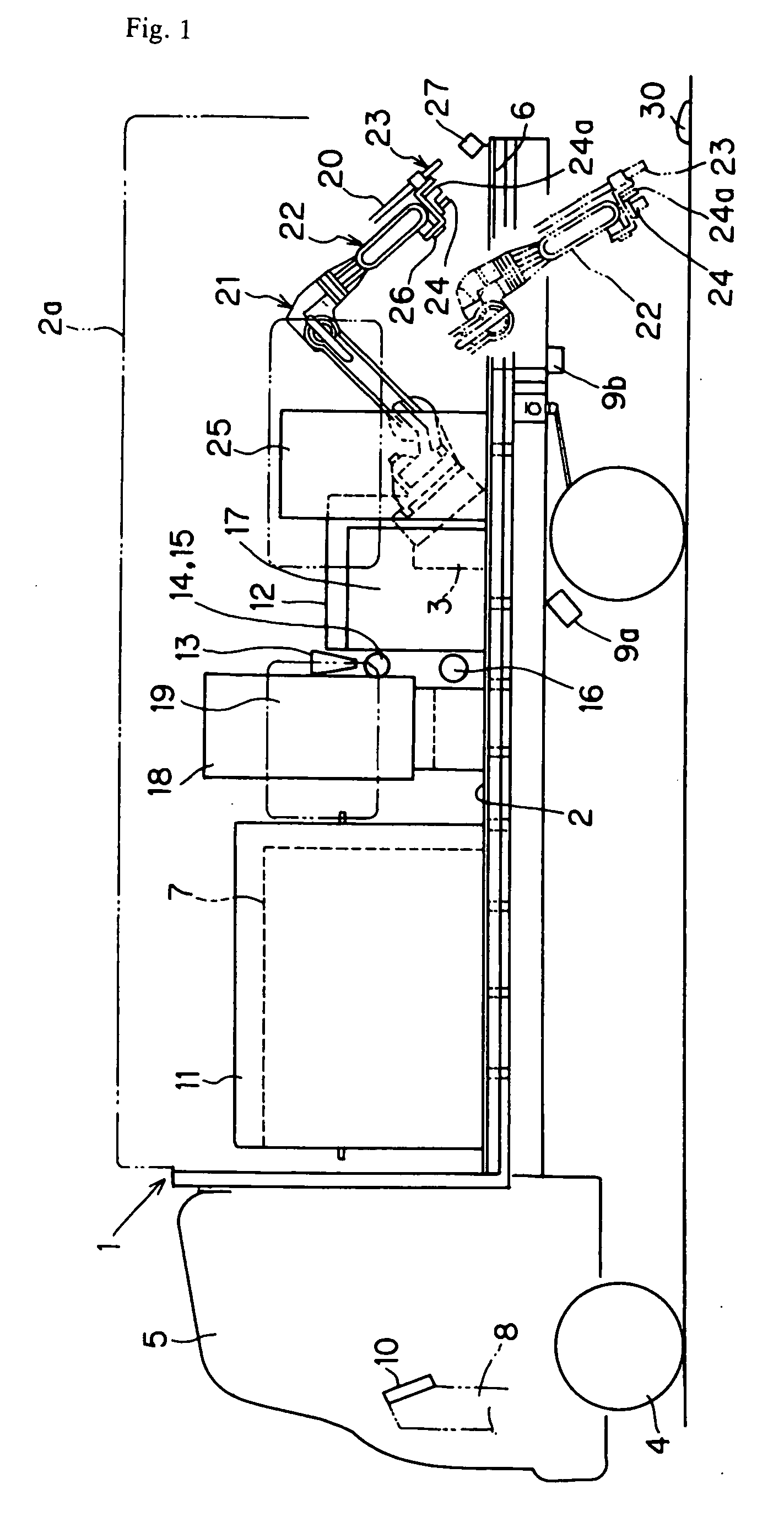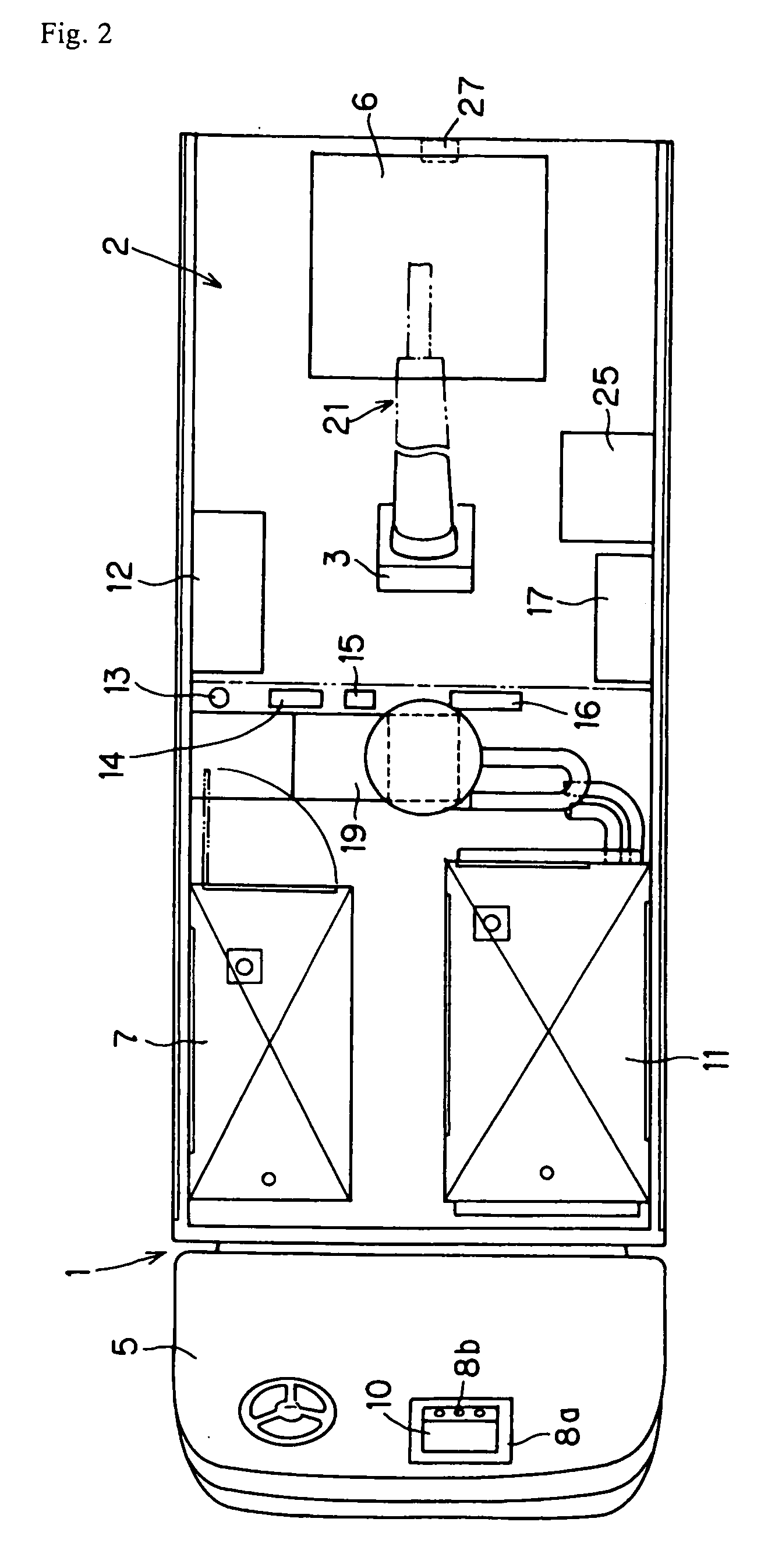Method and system for cleaning
a cleaning method and a technology for cleaning, applied in the direction of cleaning using liquids, traffic signals, roads, etc., can solve the problems of traffic congestion, effective but also dangerous, etc., and achieve the effects of preventing objects from being scratched, reducing environmental load, and improving energy conservation properties
- Summary
- Abstract
- Description
- Claims
- Application Information
AI Technical Summary
Benefits of technology
Problems solved by technology
Method used
Image
Examples
Embodiment Construction
[0028] A generator 7, a compressor 11, an air dryer 12, a filter 13, a blow tank 14, an air delivery valve 15, an ejector 16, a cleaning agent supply controller 17, a tank of dry ice or bicarbonate that is a cleaning agent (a cleaning agent tank) 18, a cleaning agent quantitative feeder 19, a working robot 21., and a robot controller 25 are mounted on the load bed 2 of a truck 1 having a canopy 2a. The working robot 21 shown in the drawings is an articulated robot which is mounted on the slope of a base 3 in an inclined manner. A bracket 26 mounted on a manipulator 22 provided at. the front end of an robot arm in such a manner to be mounted with a blast nozzle 23 connected with a high pressure rubber hose 20 derived from the delivery side of the ejector 16, a CCD camera 24 for detecting a cleaned object (surface light, reflector) 30, and a distance sensor 24a. Furthermore, an approach camera 27 for confirming whether or not the CCD camera 24 is at the stop position is mounted on the...
PUM
 Login to View More
Login to View More Abstract
Description
Claims
Application Information
 Login to View More
Login to View More - R&D
- Intellectual Property
- Life Sciences
- Materials
- Tech Scout
- Unparalleled Data Quality
- Higher Quality Content
- 60% Fewer Hallucinations
Browse by: Latest US Patents, China's latest patents, Technical Efficacy Thesaurus, Application Domain, Technology Topic, Popular Technical Reports.
© 2025 PatSnap. All rights reserved.Legal|Privacy policy|Modern Slavery Act Transparency Statement|Sitemap|About US| Contact US: help@patsnap.com



